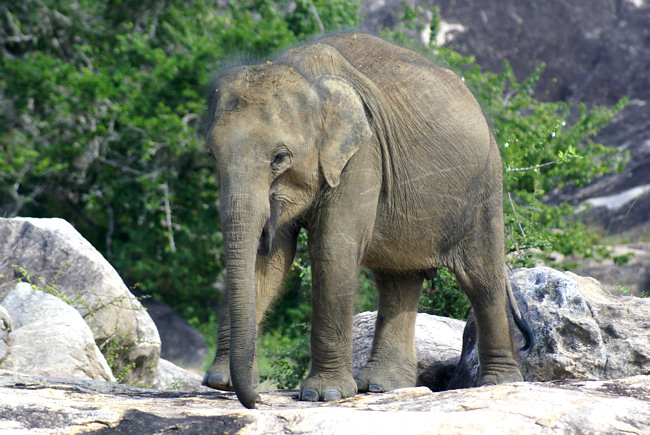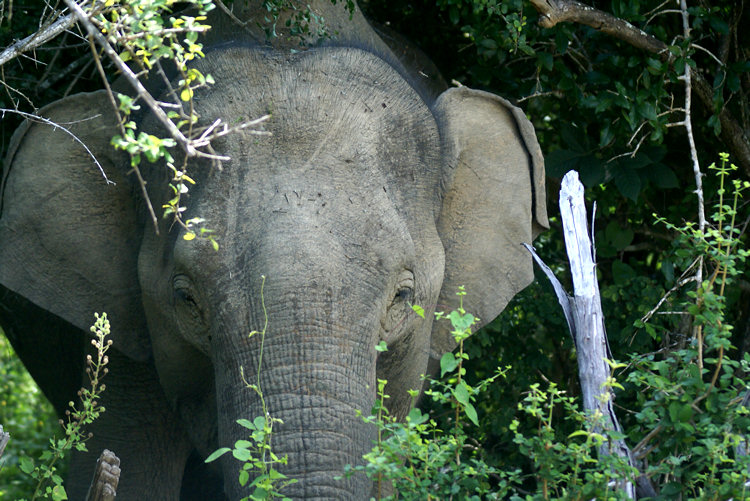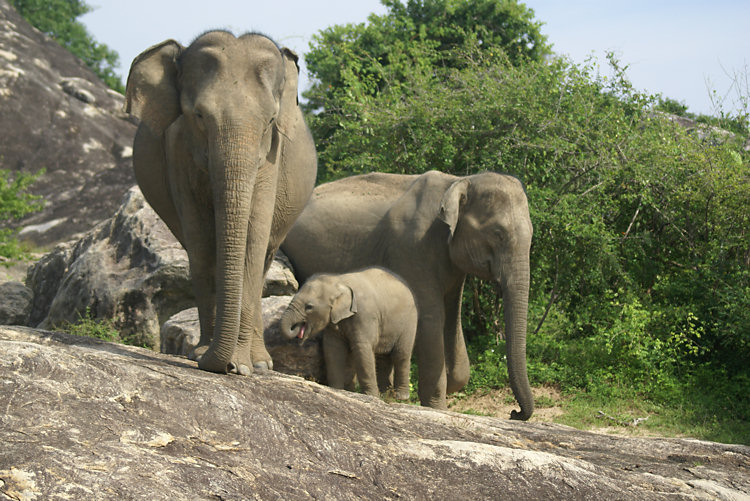Yala National Park Asian Elephants
Yala has elephants and yet more elephants. You do not normally associate Sri Lanka with going on a 4x4 safari trip. I have been on a number of African Safari holidays and Yala National Park rates just as high for the amount of animals you can see. It is strange at first that there are no lions, zebras or giraffes but there are lots of other animals to see.

Baby Asian Elephant in Yala National Park
One of the big tourist draws to Yala are the quantity of free roaming Asian Elephant family groups. In the morning and late afternoon you will see them at watering holes. If you are in a small group find a small pond and park up.
Observe what comes to drink. Be patient. I know this can be difficult to do on tours with large groups that are rushed around the park. This is why I really recommend not doing just a morning tour. Go all day. You need to spend time observing nature. Not zooming around in the back of a dusty bumpy all terrain vehicle.

Asian Elephants at noon can be found sheltering from the sun under trees in Yala National Park
In the hot midday sun the elephants seek shade. Many tourist books say that this is a bad time to observe animals. Not true. You have to use your eyes a bit more. Look for where elephants can get shade and you will find them. Later you can follow them on their afternoon hike to the nearest water hole.
Although elephants are huge they are masters of camouflage. You probably think I am taking rubbish, Time and time again I have been startled to discover a fully grown elephant hiding in a big clump of bush or jungle only a few yards from my vehicle.

Asian Elephant family in Yala National Park
The Asian Elephant
The first thing you notice is that the Asian elephant has smaller ears than its African cousin. They are also generally smaller in body size as well. This is possibly an adaptation to living in dense jungle rather than the hot open plains. Female Asian elephants normally lack tusks. The two round bulges on their forehead are also identifying features as the African elephant has a flater front forehead.
The male bull elephant uses his tusks when fighting other males over the right to mate with females. They also use them to rip off the bark on trees, move fallen trees and dig for salt, and water to drink. Look out for males using them as a handy place to rest their trunk. There are three subspecies of Asian Elephant: the Indian elephant; the Sumatran Elephant and the Sri Lankan Elephant. Asian elephants can live up to 80 years in captivity and normally 60 years in the jungle.
After washing you will notice the elephants in Yala covering their back in dust. To us humans this seems really dumb but the elephants know what is good for them. The dust and mud acts as a sun screen and conditioner. it also helps get rid of skin parasites. They need to drink between 80 to 200 litres of water a day. They consume vast amounts of plant life each day. On average about 150kg or 330lb of sedge, grasses, palm leaves, fruit, legume and tree bark. You will often see them scraping at the ground with their feet or tusks. They are looking for minerals to supplement their diet.
Look out for males with dark fluid secretions coming out of glands located between its eye and the base of its ear. This male could become aggressive. Between the age of 10 and 20 years every year they undergo 'musth'. Their testosterone levels hugely increase and they go looking for females in season with which to mate. They will fight other bull elephants. They sometimes pick on tourist safari vans to test out their strength. Use caution and back away slowly. Baby elephants stay in the mothers womb for 18 to 22 months. It is suckled for 2 to 3 years. They normally do not mate again until the baby is weaned off mothers milk and can find food for itself.
Travel books

